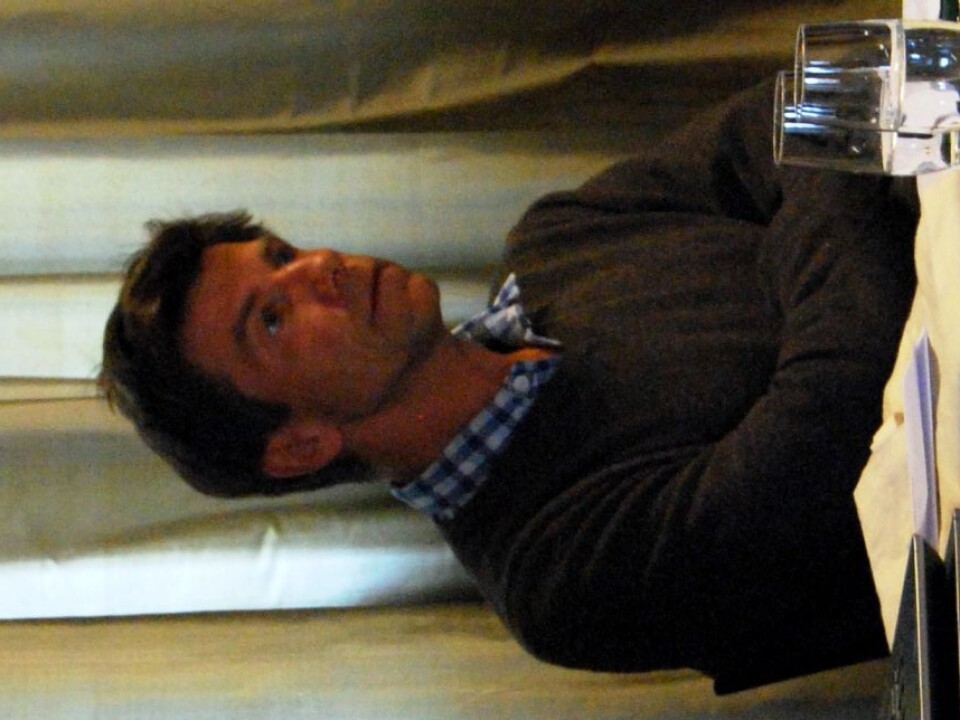
Quantity outpaces quality in Norwegian research
Norwegian researchers publish increasingly more articles but their work is declining in quality and the country’s system for financing it deserves much of the blame, claims Norwegian professor.
Denne artikkelen er over ti år gammel og kan inneholde utdatert informasjon.
Biologist Dag O. Hessen presented recently his contribution to a new book on research and money. The book is published by the National Committee for Medical and Health Research Ethics.
Hessen wrote about the Norwegian scheme for funding research, which he thinks is on the wrong track:
‟Programme-linked research funding allow very little margin for free research,” he said at a research conference in Lillehammer, Norway.
‟The real picture, as we currently see it, leads us to conclude sometimes that the ministries order specific results. This is commissioned research, but to push it to extremes you could almost call it confirmation research.”
The system leads to opportunism

According to Hessen, free research funds in Norway comprise only around seven percent of the total kitty held by the Research Council on Norway.
The rest of the money, channelled by government ministries through the Research Council and allocated to the programme areas, mainly goes to research the ministries need or want.
‟We all know the deadline for seeking funds from the Research Council was two days ago and certainly a lot of us were struggling to rig something together in an application conforming to some programme announcement,” said Hessen.
He explains that this results in a lot of opportunistic research and makes people fly false colours: They pretend they’ll conduct research they really aren’t capable of, and which they don’t really plan to do, but they give it a framework that meets the specifications of the programme announcements.
Researchers should reflect on why they are where they are, instead of just thinking about this as a career path.
Hessen thinks the pool of funds for free research in Norway should be more than doubled.
‟If we were to toss out a figure on the share that should be free funding, then I’d say about 20 percent,” he said.
Opting for more, but poorer publications
An editorial in the Norwegian business daily "Dagens Næringsliv" recently wrote that Norwegian researchers publish more and more, but each article gets quoted less and less frequently.
‟A lot indicates that quantity is increasing but quality is declining,” confirms Hessen.
‟Some of this can be blamed on the framework conditions, with incentive schemes that encourage as many publications as possible, as well as the fact that appropriations are divided up for each ministry.”
But the University of Oslo professor thinks researchers should also look for culprits in the mirror.
‟We opt for the ‛least publishable unit’, we give more thought to ‛is this something we can publish?’ than to ‛is this something that can lead to a fundamentally new understanding in five years?’ This makes people take shortcuts and opt for easy solutions,” he said.
Splitting up in a grey zone
‟Least publishable unit” means that if you have two results from one study, for instance a mother-child study that has given one new result for mothers and a similar one with just a slightly different angle for children, you split these two up.
You can play the study out into two research articles with one of the findings in each. This yields twice as many publishing points for the researcher.
‟Researchers should reflect on why they are where they are, instead of just thinking about this as a career path. They shouldn’t be concerned about publishing as many articles as possible in a minimal amount of time,” asserts Hessen.
Several American universities and research firms, such as Johns Hopkins University and the American Chemical Society, have defined this method of splitting up research results as unethical. Hessen isn’t sure he would go that far, but he’s concerned about the trend.
‟I wouldn’t call it dishonest, but in some ways it definitely shoves research into a grey zone,” he said.
Undermining peer reviews
You would think many articles that are published just for the sake of publishing would be weeded out in the peer review process.
But peer reviews are also under pressure according to Hessen:
‟With the exception of the most prestigious journals I’d claim that peer reviews are a lot more superficial now than they used to be. There’s much more pressure, you don’t have a month or two anymore to make an evaluation, because the journal that wins is the one that’s quickest to publish new research,” he said.
‟Hordes of new access journals have cropped up, and the big scientific publishing houses launch new periodicals every week, with earning profits as the primary goal. So you’ll always find someone who wants your results, no matter how flimsy they are," said Hessen.
In a press release from Minister of Education and Research Kristin Halvorsen early this june on the status of Norwegian research, Halvorsen suggests that the figures comprise a wake-up call.
‟This indicates we still face the challenge of raising the quality of Norwegian research to a top international level in several areas,” she said in her statement.
-----------------------------------
Read this article in Norwegian at forskning.no

































